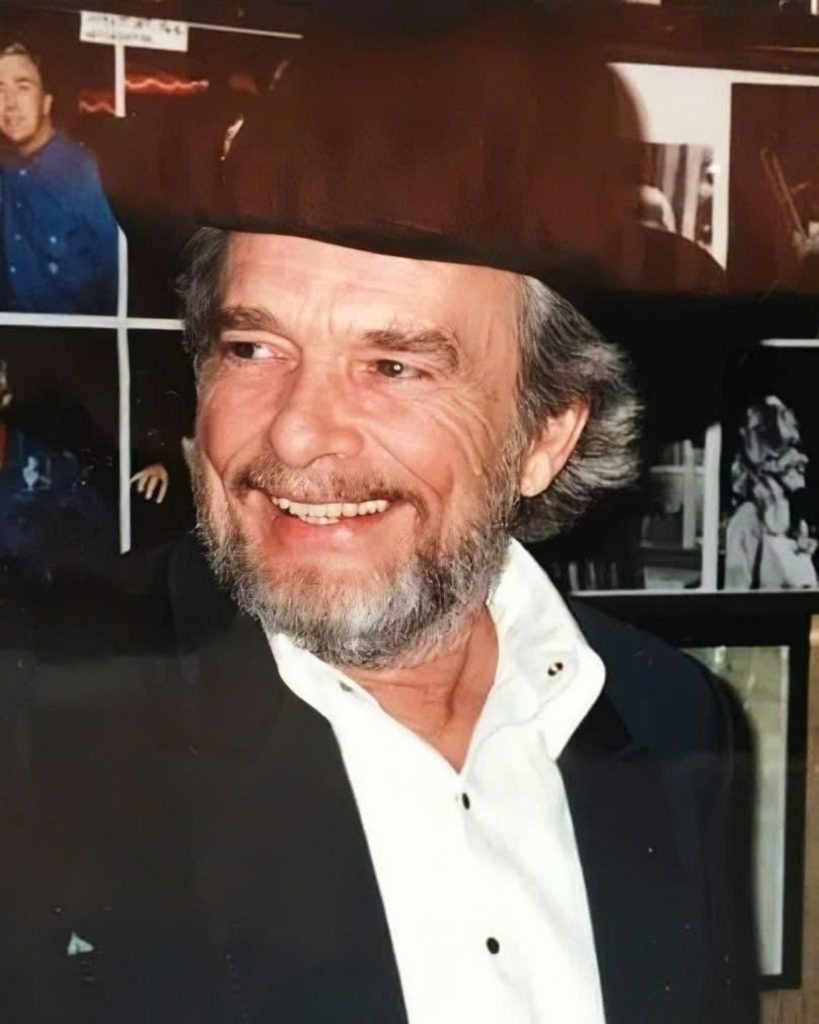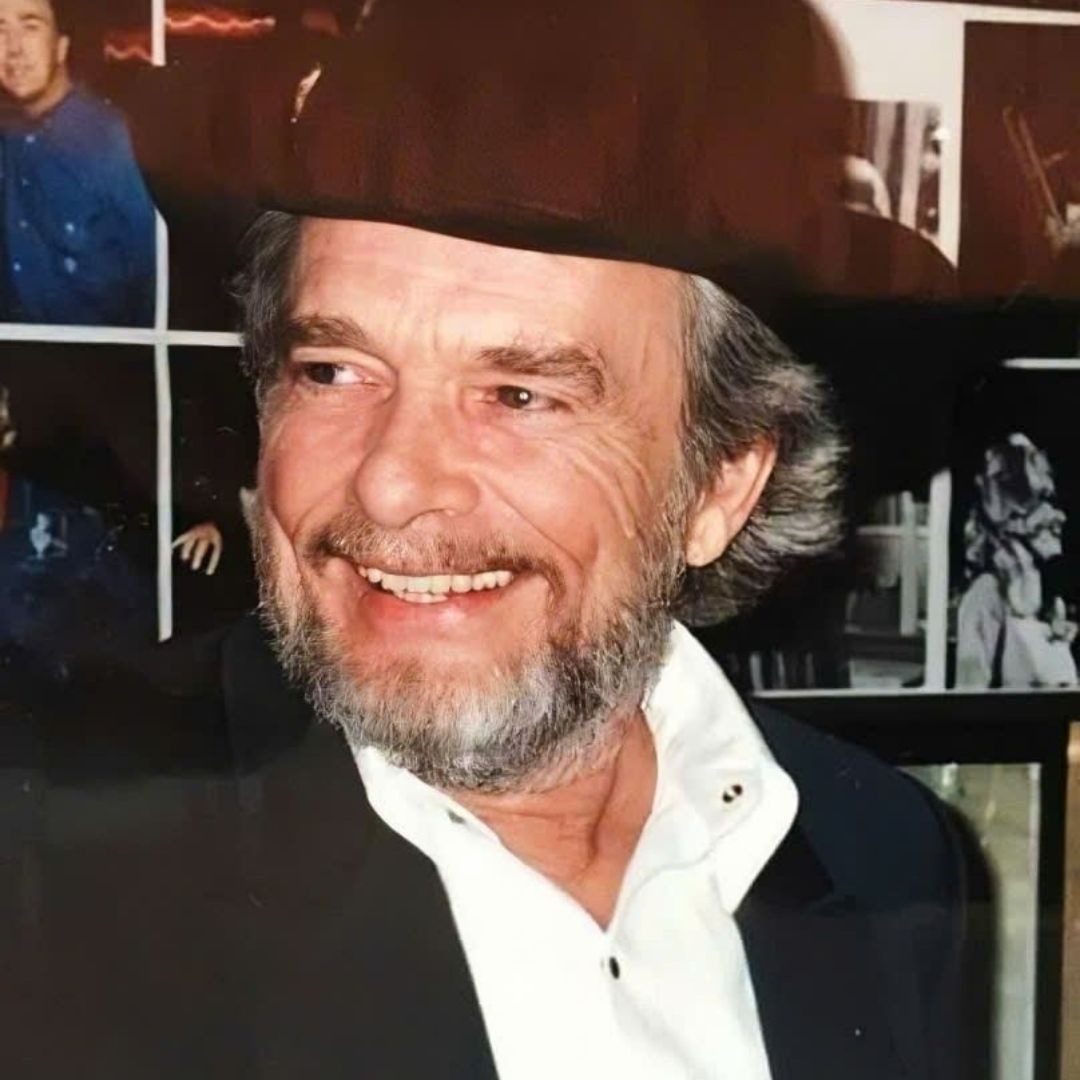
Introduction
I still remember the first time I heard Merle Haggard’s voice crackle through my grandpa’s old truck radio. It was a dusty summer day, and we were hauling hay down some backroad, the kind of scene Haggard himself might’ve sung about. When The Fightin’ Side of Me came on, Grandpa cranked the volume, tapped the steering wheel, and said, “This one’s got guts.” That moment stuck with me—not just because of the song’s bold swagger, but because it felt like a window into a time when folks weren’t afraid to say what they felt, right or wrong. Written in 1970, this tune’s got a story that’s as much about Haggard’s heart as it is about a divided America. Let’s dig into it.
About The Composition
- Title: The Fightin’ Side of Me
- Composer: Merle Haggard (written and performed with The Strangers)
- Premiere Date: Released as a single in January 1970
- Album/Opus/Collection: The lead single and title track from the album The Fightin’ Side of Me
- Genre: Country (with a strong patriotic, traditional country flavor)
Background
Picture Merle Haggard in late 1969, fresh off the wild success of Okie from Muskogee, a song that had folks cheering for small-town values while others picketed his shows. He wasn’t planning to double down on that vibe—actually, he wanted to pivot with Irma Jackson, a tender ballad about interracial love. But his label, Capitol Records, balked. They saw gold in his blue-collar, flag-waving image and nudged him toward something fiercer. So, Haggard sat down, fueled by frustration with Vietnam War protests and a deep love for the country he’d fought to understand after years in and out of trouble (including a stint in San Quentin). Out came The Fightin’ Side of Me—a gritty, unapologetic anthem born from a man who’d seen hard times and wasn’t about to let anyone trash the place that gave him a second chance.
It dropped in January 1970 and shot straight to No. 1 on the Billboard Hot Country Singles chart, holding the spot for three weeks. Fans loved it; it spoke to a working-class pride that felt under siege. Critics? Some called it jingoistic, a jab at the counterculture Haggard admitted “pissed him off.” In his catalog, it’s a cornerstone—right up there with Okie—cementing him as a voice for the “silent majority” of the era.
Musical Style
This isn’t a fancy composition—it’s pure, no-frills country. Think twangy steel guitar, a steady thump of bass, and drums that keep it marching forward like a determined heartbeat. Haggard and The Strangers kept it simple: a verse-chorus structure that doesn’t overthink itself, letting the lyrics do the heavy lifting. The instrumentation’s lean—guitar, fiddle, maybe a touch of piano—classic Bakersfield sound with that raw edge Haggard made his own. It’s not about flashy solos or tricky rhythms; it’s about delivering a message with a clenched fist and a steady gaze. The live version, recorded later that year in Philadelphia, adds a rowdy crowd’s energy, turning it into a rally cry. That simplicity? It’s what makes the song hit like a freight train—direct, unpolished, and real.
Lyrics/Libretto
The lyrics are where the fight lives. Haggard sings as a guy who’s fed up—fed up with “people talkin’ bad about the way we have to live here in this country,” griping about wars and ways of life he figures soldiers died for. Lines like “If you don’t love it, leave it” and “You’re walkin’ on the fightin’ side of me” aren’t subtle—they’re a warning, a line in the sand. The themes? Patriotism, sure, but also a rugged individualism, a defense of the underdog who’s proud of his roots. It’s less a love letter to America than a barroom challenge to anyone tearing it down. The music backs this up with a steady, defiant pulse—nothing flowery, just a growl that matches the words’ bite.
Performance History
The song debuted as a single, but its live version from the 1970 The Fightin’ Side of Me album—recorded in Philly—became iconic. You can hear the crowd roaring, feeding off Haggard’s energy, and it’s electric. It hit No. 1 fast, and stayed a staple in his sets, especially in the early ‘70s when Vietnam debates raged. Over time, it’s popped up in retrospectives and tribute shows, though its polarizing edge means it’s not always a universal crowd-pleaser. Still, for country fans, it’s a touchstone—a piece of Haggard’s legend that’s been covered by folks like Toby Keith, who dubbed it “the original Angry American song.” Its place in country’s canon? Undeniable, even if it’s a bit rough around the edges.
Cultural Impact
The Fightin’ Side of Me didn’t just ride the charts—it rode the zeitgeist. In 1970, America was split: hippies on one side, hardhats on the other, and Haggard’s song became a battle hymn for the latter. President Nixon sent him a fan letter, and he played the White House more than once. Beyond music, it’s echoed in political rhetoric—“love it or leave it” became a catchphrase for decades. You’ll hear its spirit in war movies or documentaries about Vietnam, even if the song itself doesn’t play. It’s a artifact of a time when country music took a stand, for better or worse, and shaped how people saw the genre—not just heartbreak, but backbone too.
Legacy
Here’s the thing: this song still stirs people up. It’s not some dusty relic; it’s a live wire. Today, it resonates with anyone who feels their way of life’s under attack—same as it did in ‘70. Haggard’s own views softened later (he even wrote a song for Hillary Clinton in 2008), but The Fightin’ Side of Me stands as a snapshot of his fire at that moment. It’s not his prettiest work, or his deepest, but it’s one of his truest. Performers still tackle it, audiences still cheer or jeer, and that’s its power—it doesn’t let you stay neutral. In country music, it’s a reminder that the genre’s got room for grit and guts, not just tears and beers.
Conclusion
I’ll be honest: this song’s not for everyone. It’s brash, it’s stubborn, and it doesn’t apologize. But that’s why I love it—it’s Merle Haggard at his most unguarded, singing what he felt in his bones. Whether you’re nodding along or shaking your head, it’s worth a listen to feel that raw pulse of 1970s America. Check out the live version from the The Fightin’ Side of Me album—crank it up and let the crowd’s roar pull you in. Or grab the studio cut for that pure, stripped-down punch. Either way, it’s a piece of history that still kicks. What do you think—does it fire you up or ruffle your feathers? Dive in and find out
Video
Lyrics
I hear people talkin’ bad about the way we have to live here in this country
Harpin’ on the wars we fight, an’ gripin’ ’bout the way things oughta be
An’ I don’t mind ’em switchin’ sides, an’ standin’ up for things they believe in
When they’re runnin’ down my country, man
They’re walkin’ on the fightin’ side of me
Yeah, walkin’ on the fightin’ side of me
Runnin’ down a way of life our fightin’ men have fought and died to keep
If you don’t love it, leave it
Let this song I’m singin’ be a warnin’
When you’re runnin’ down my country, man
You’re walkin’ on the fightin’ side of me
I read about some squirrely guy who claims he just don’t believe in fightin’
An’ I wonder just how long the rest of us can count on bein’ free
They love our milk an’ honey, but they preach about some other way of livin’
When they’re runnin’ down my country, hoss
They’re walkin’ on the fightin’ side of me
Yeah, walkin’ on the fightin’ side of me
Runnin’ down a way of life our fightin’ men have fought and died to keep
If you don’t love it, leave it
Let this song I’m singin’ be a warnin’
When you’re runnin’ down my country, man
You’re walkin’ on the fightin’ side of me
Yeah, walkin’ on the fightin’ side of me
Runnin’ down a way of life our fightin’ men have fought and died to keep
If you don’t love it, leave it
Let this song I’m singin’ be a warnin’
When you’re runnin’ down my country, man
You’re walkin’ on the fightin’ side of me
